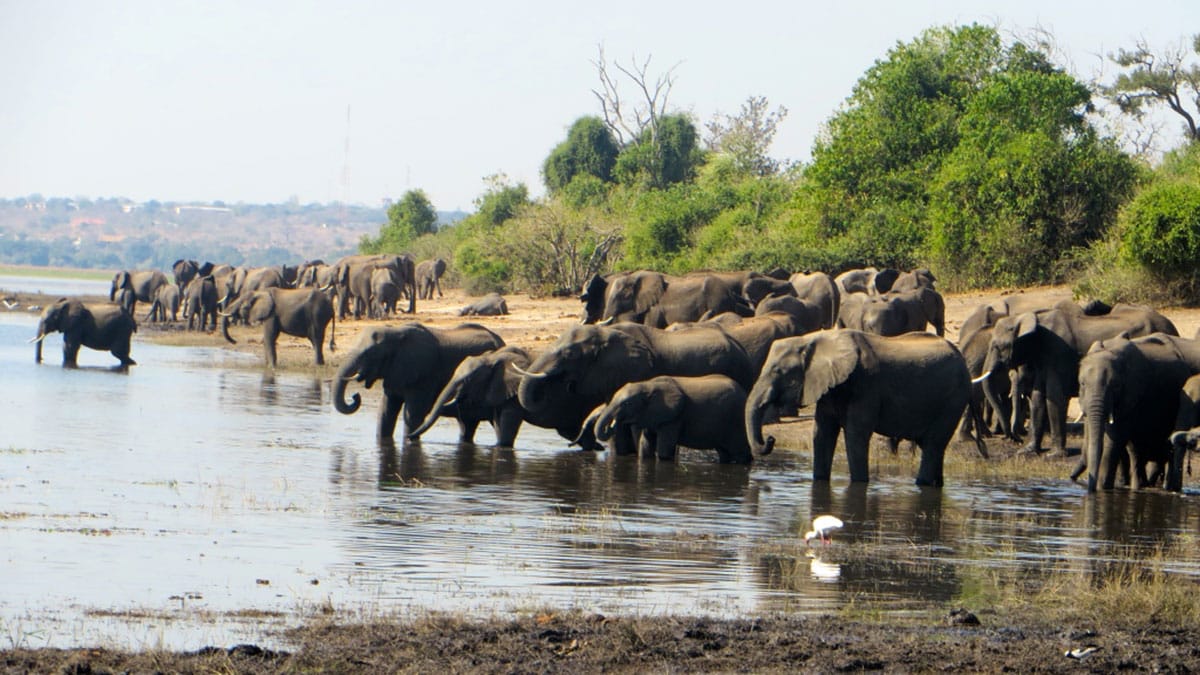Prolonged heat wave kills 42 elephants
At least 42 savanna elephants recently died from devastating effects of climate change that has resulted in a severe drought in Khwai and surrounding areas
This came out in a report presented by the North West District Council chairperson, Itumeleng Kelebetseng during the full council meeting on Monday. Kelebetseng said that more and more elephants are succumbing to a combination of foot lesions (wounds) and drought in the areas surrounding the Okavango Delta which is currently experiencing an extremely dry season.
“The elephants were found to be lame; not walking properly and this affected their ability to access water and forage [food), ultimately leading to their death. The wounds were suspected to be a result of wildfires and the extremely hot conditions experienced towards the end of 2023.” said Kelebetseng
The Full Council meeting was held two months after the Regional Wildlife office reported on the problem, but did not have the exact figures at the time as investigations were ongoing and numbers of affected elephants were steadily increasing.
The Regional Wildlife officer Dimakatso Ntshebe had indicated that it was evident that there was a shortage of forage for the animals as their bodies had shown signs of malnutrition.
The unforgiving and prolonged heatwave did not help the situation either as currently the status of the life of river systems in the district does not look good as the water flows and levels of lower Okavango Delta especially along the Xudum , Boro, Santantadibe, Gomoti and Thamalakane River systems completely dried up since November 2023.
However Kelebetseng has noted that the 2023/24 hydrological year’s annual inflows of the Okavango River at Mohembo are slightly higher than those of the preceding year, “During the past hydrological year 2022/23 flows reached the Thamalakane River in July but by the beginning of October the river’s water flow was disconnected while the lower Boro had dried up. This was mainly due to evaporation resulting from high temperatures and extractions.”
Generally, according to the council, the flow trends of the regional river systems have shown a continuous decline in recent years as a result of a series of years of below-normal rainfall patterns upstream, Angola and Namibia and this has a bearing on the current status of the entire Delta.
“We still remain hopeful that life will return to our river even though the Department of Meteorological services has forecasted that the bulk of the country is expected to receive below normal rainfall,” said Kelebetseng.
The country experienced massive deaths of elephants around Okavango Delta in 2020 when more than 350 elephants died from a mysterious disease mainly around Okavango region.
The cause of deaths was later attributed to bacterial infection.
Nonetheless, the country remains a home to a highest number of elephants in the African region, more than a combined numbers of elephants in its four neighbouring countries in the Kavango Zambezi (KAZA) transfrontier corridor. Botswana together with these four countries, Angola Namibia, Zimbabwe and Zambia share common boarders along the Okavango and Zambezi River basins and the waters that annually flood the Okavango Delta in Botswana flows from Angola highlands, via Namibia and into Botswana through Okavango River in Mohembo. Elephants and other wild animals move freely between these countries.
The 2022 KAZA ariel survey counted 131,909 elephants in Botswana, 65,000 in Zimbabwe, 21,090 in Namibia, 5,983 in Angola and a least number of 3840 in Namibia.






